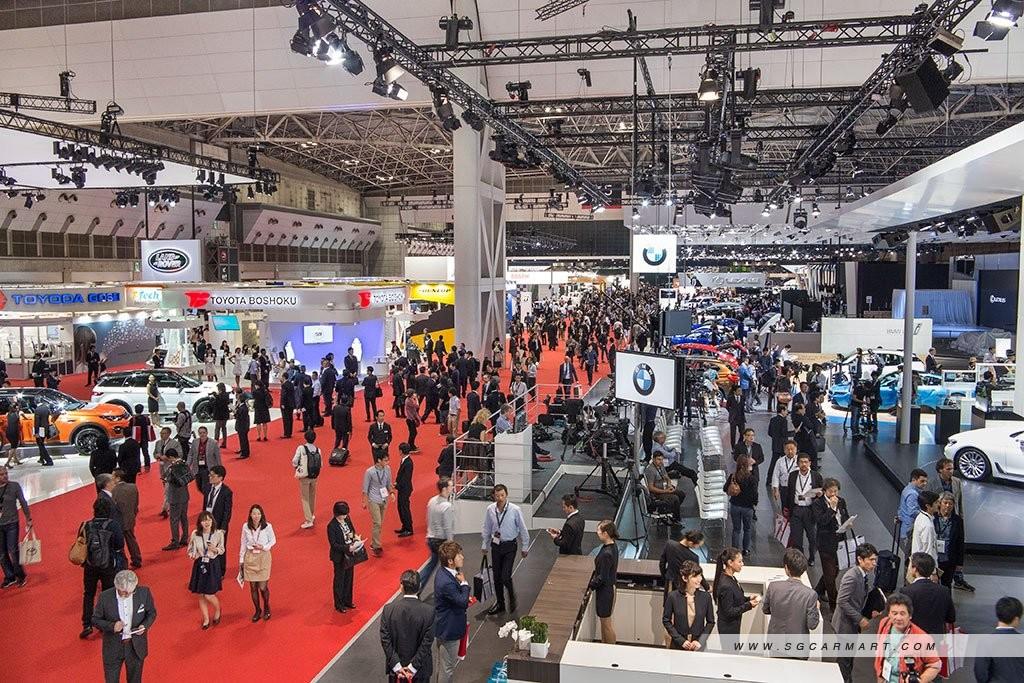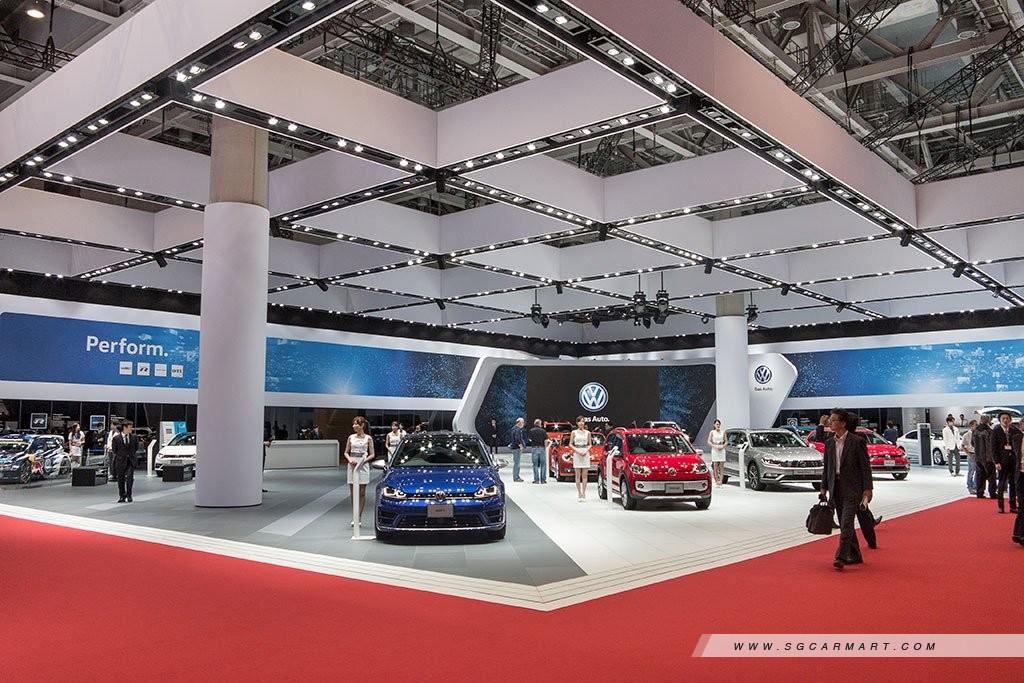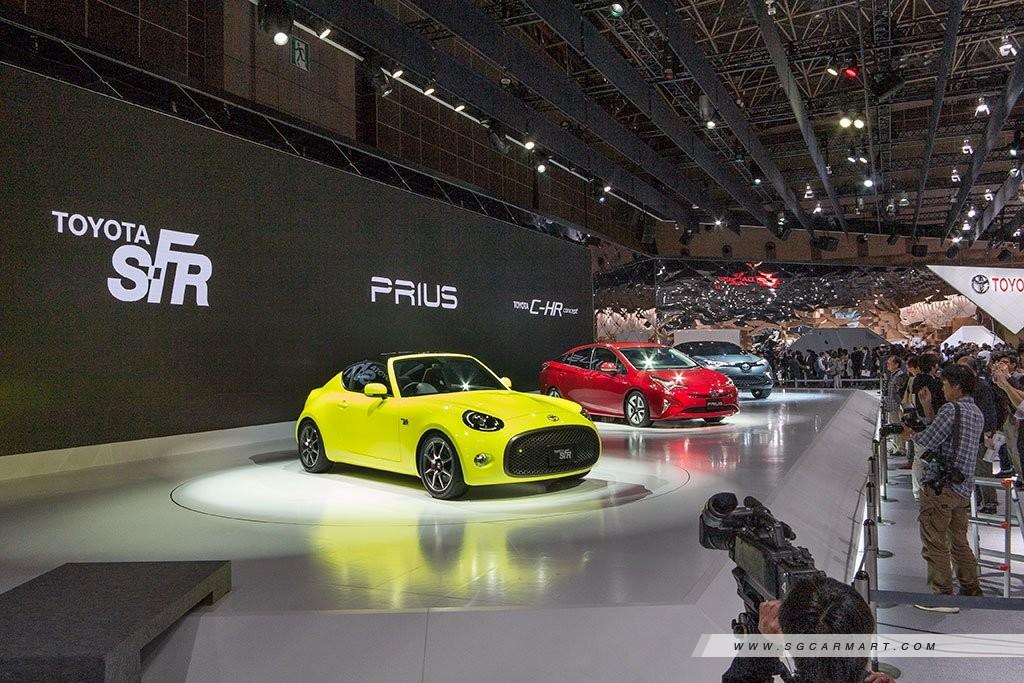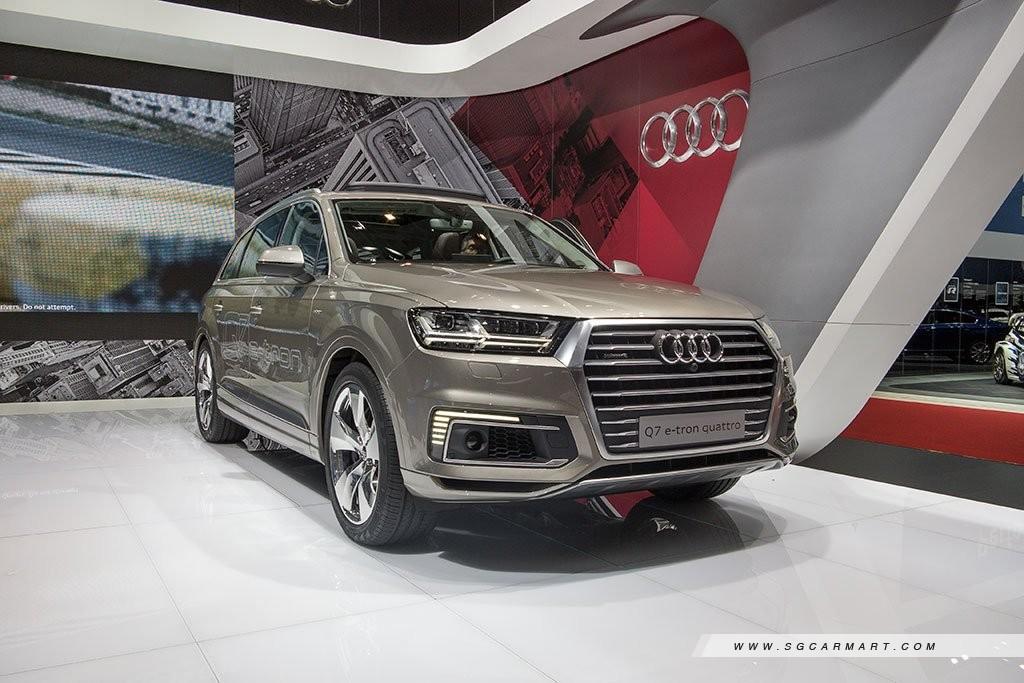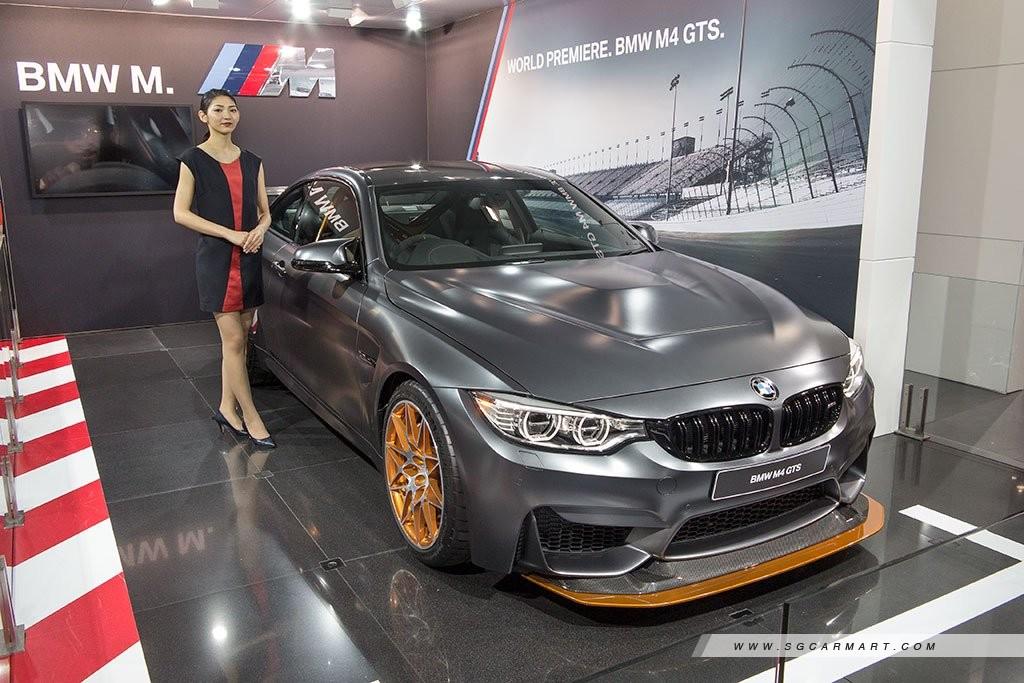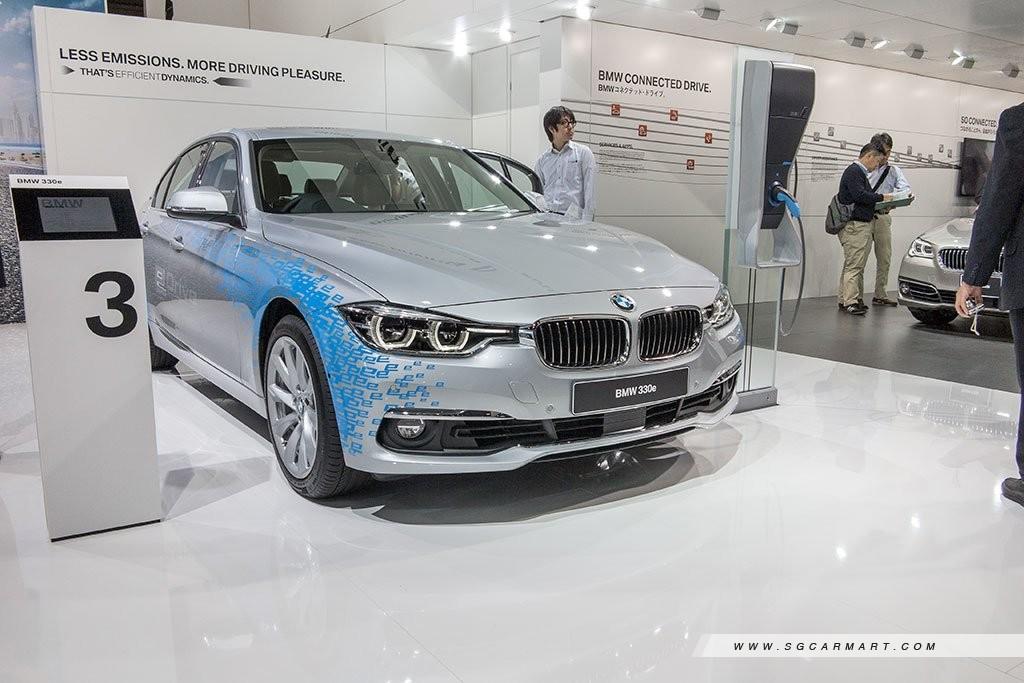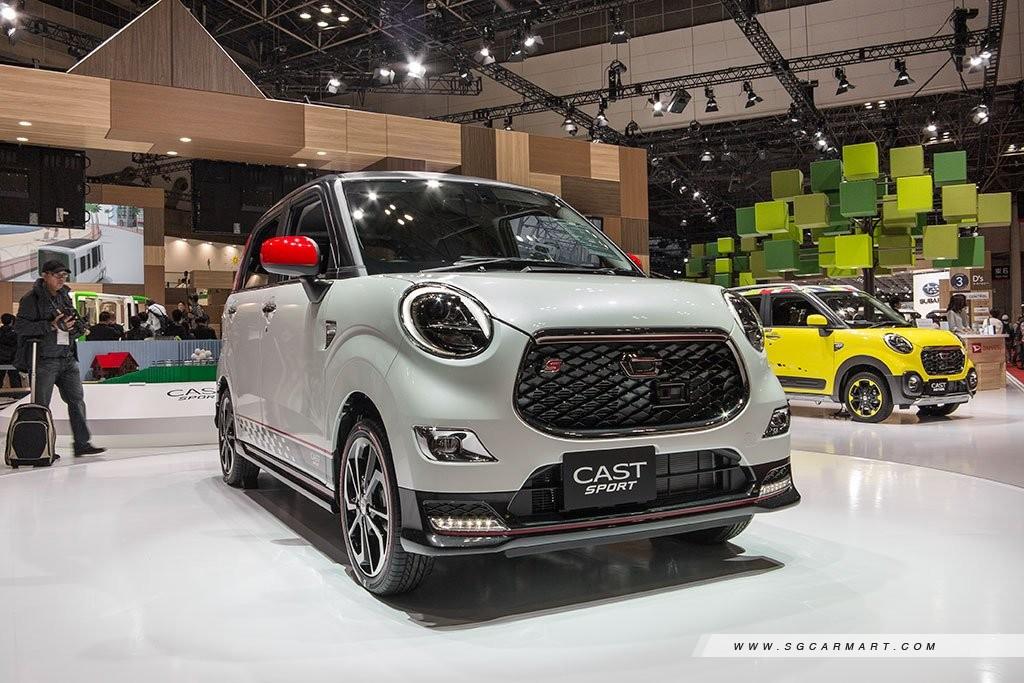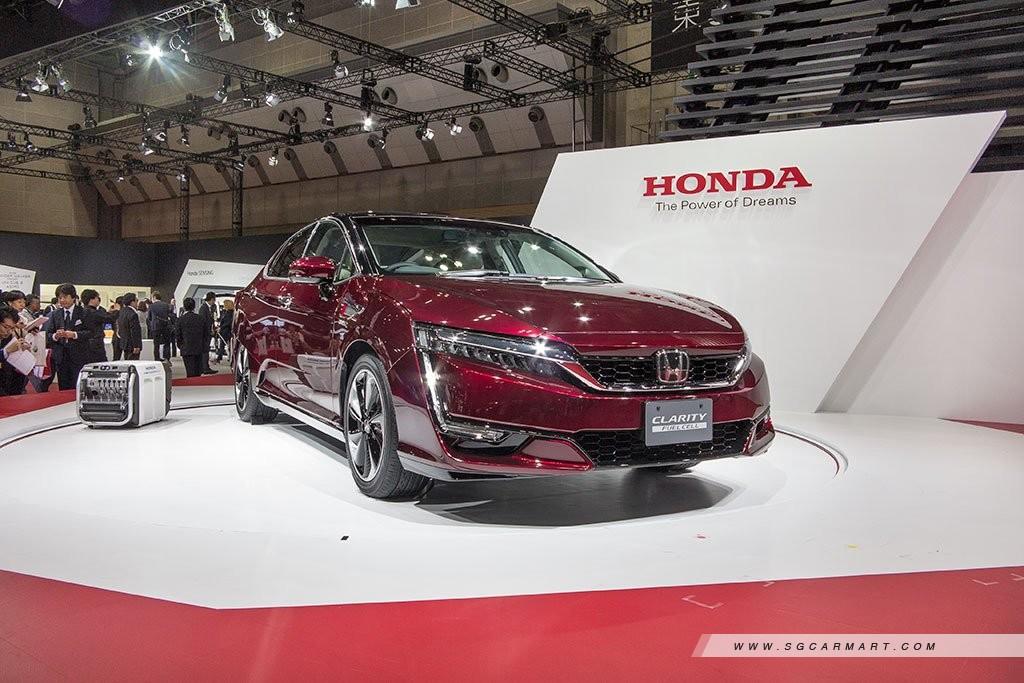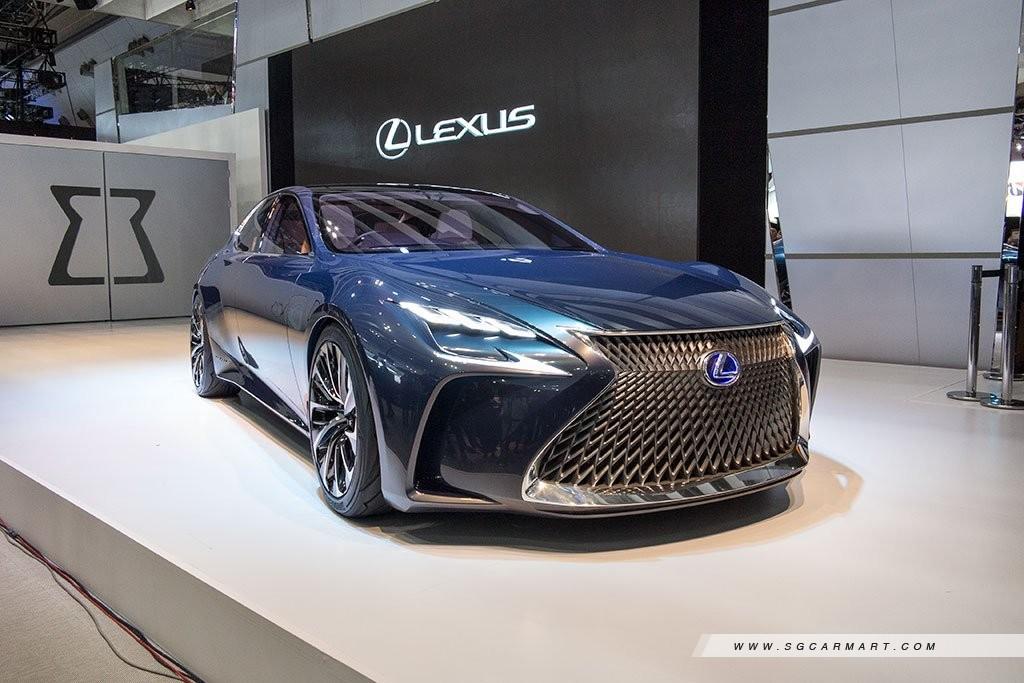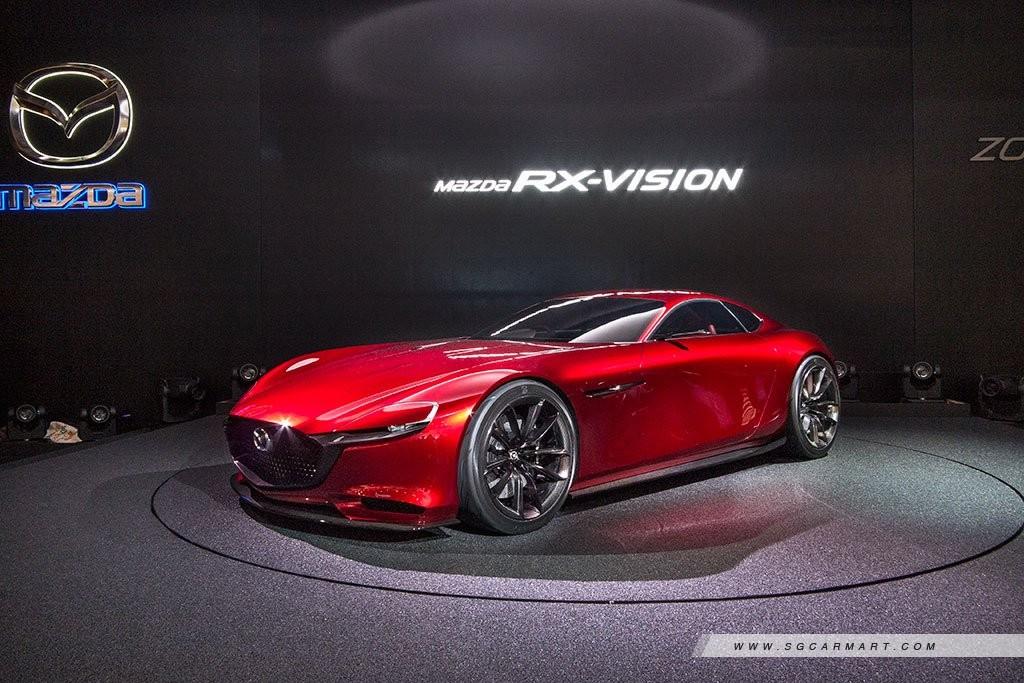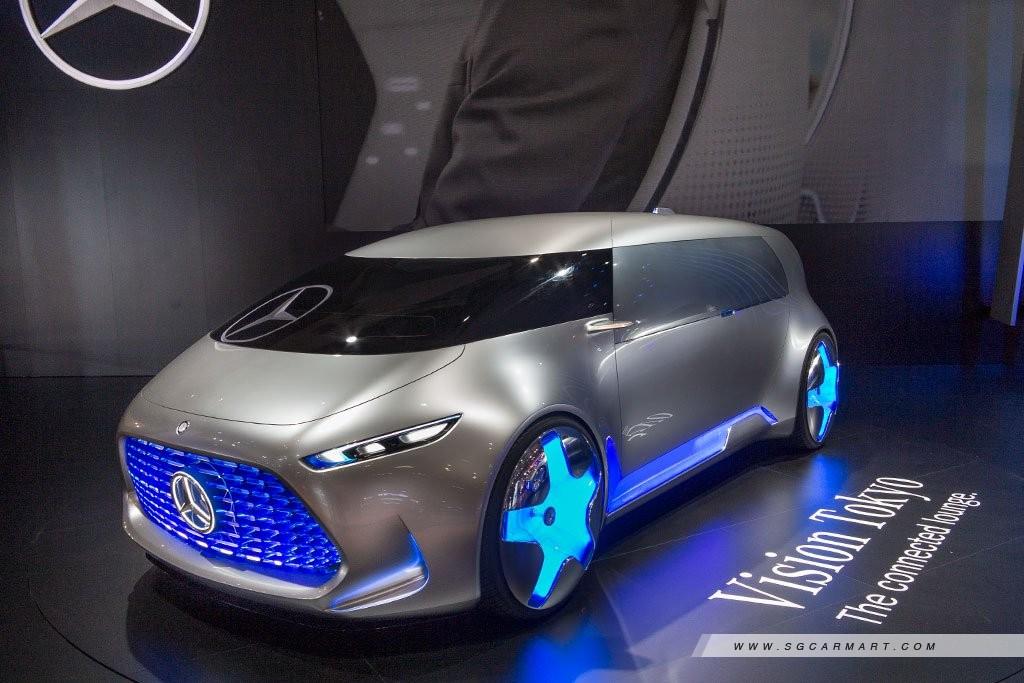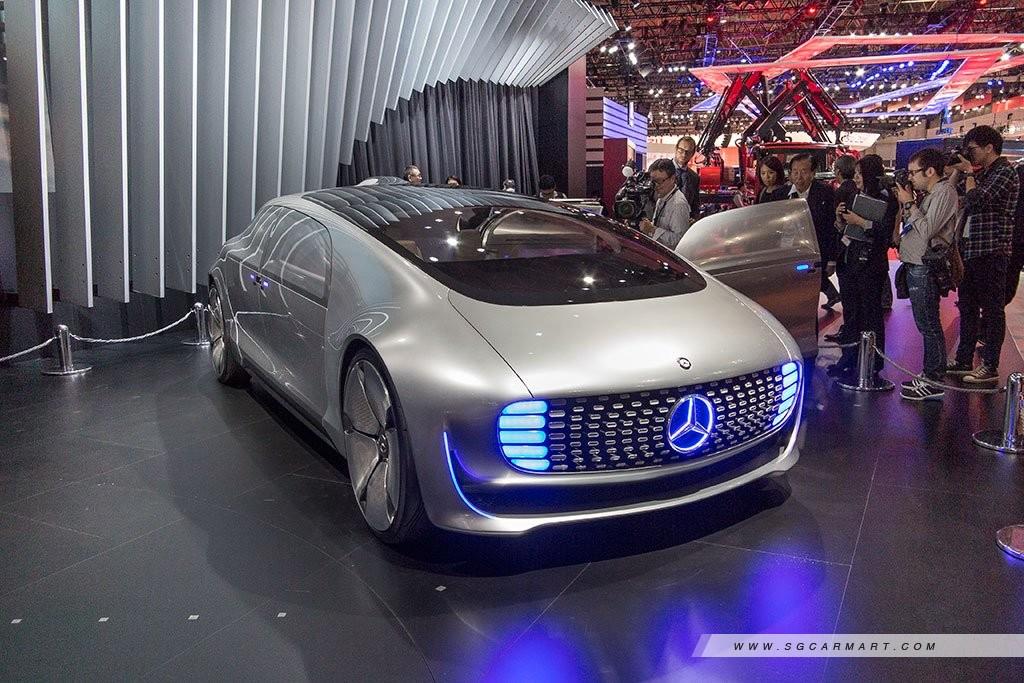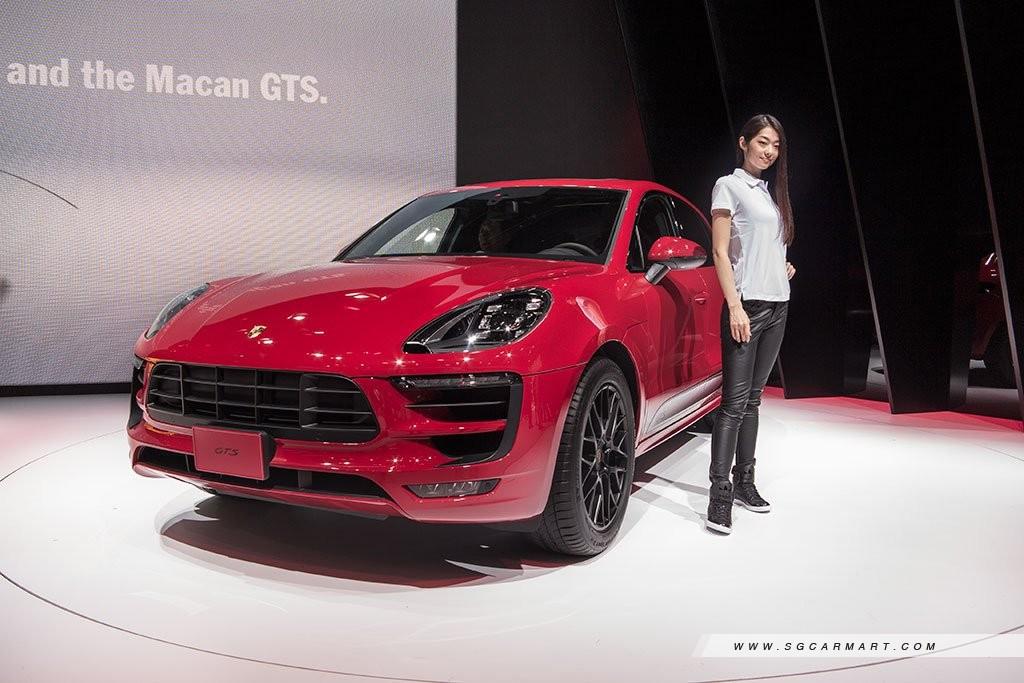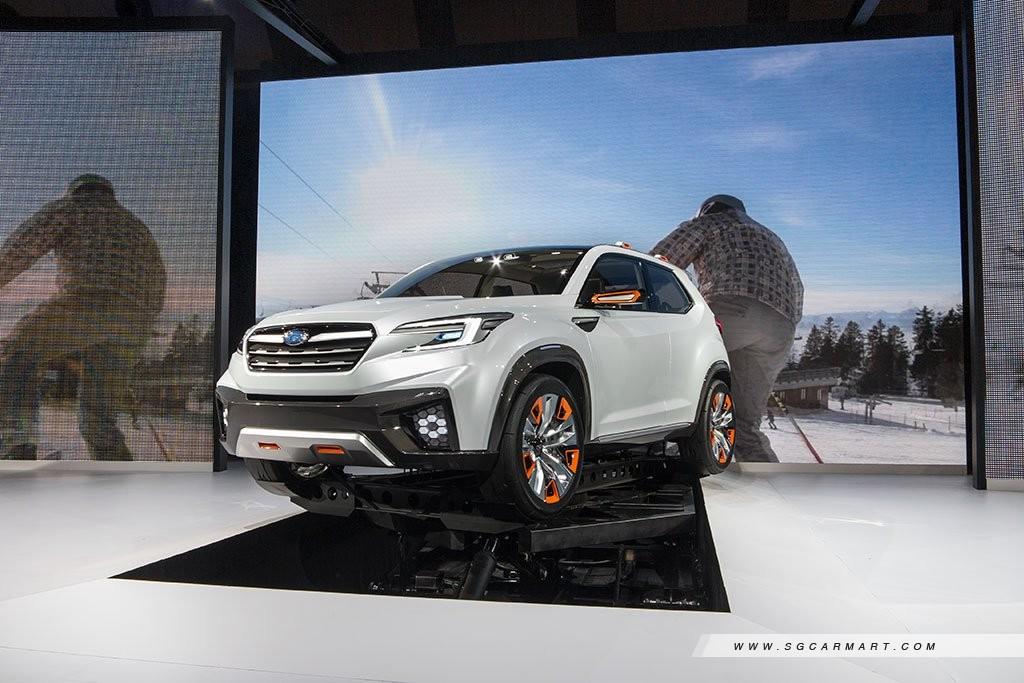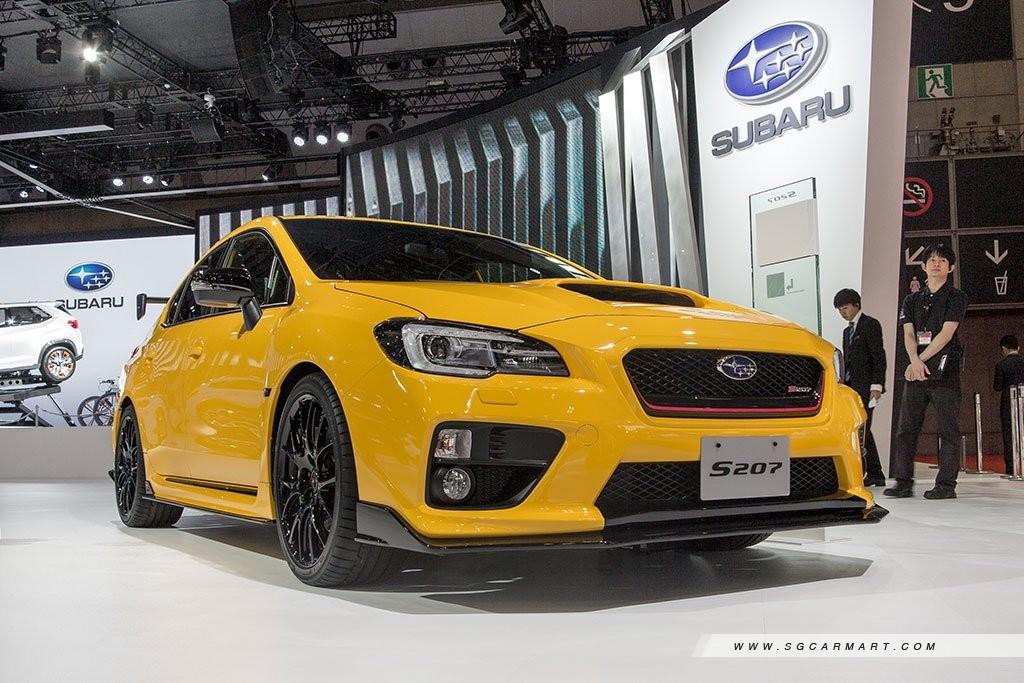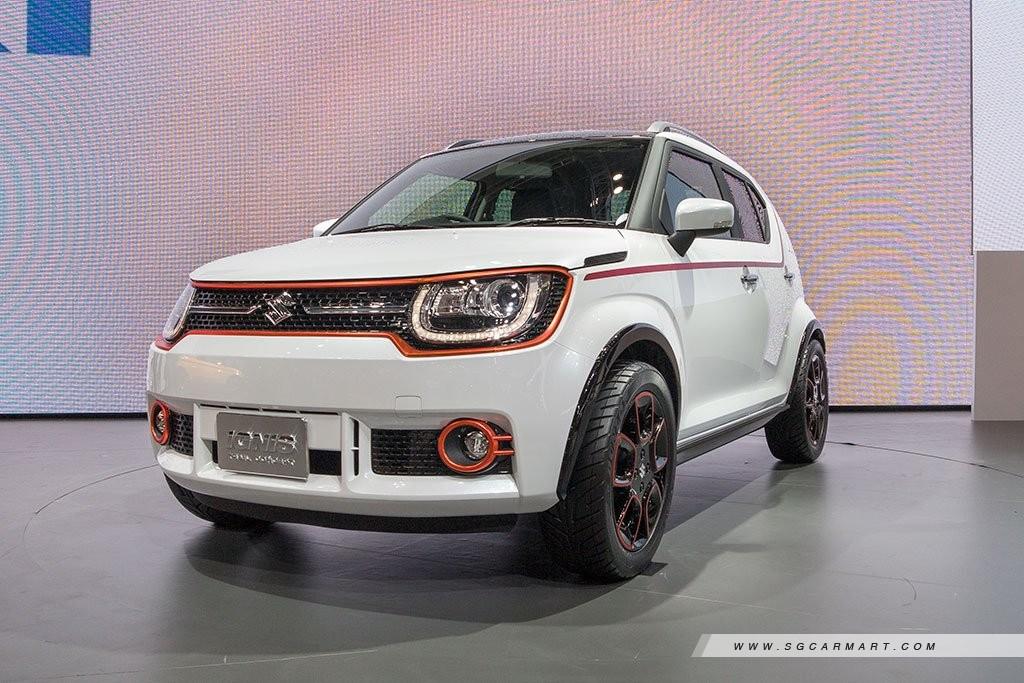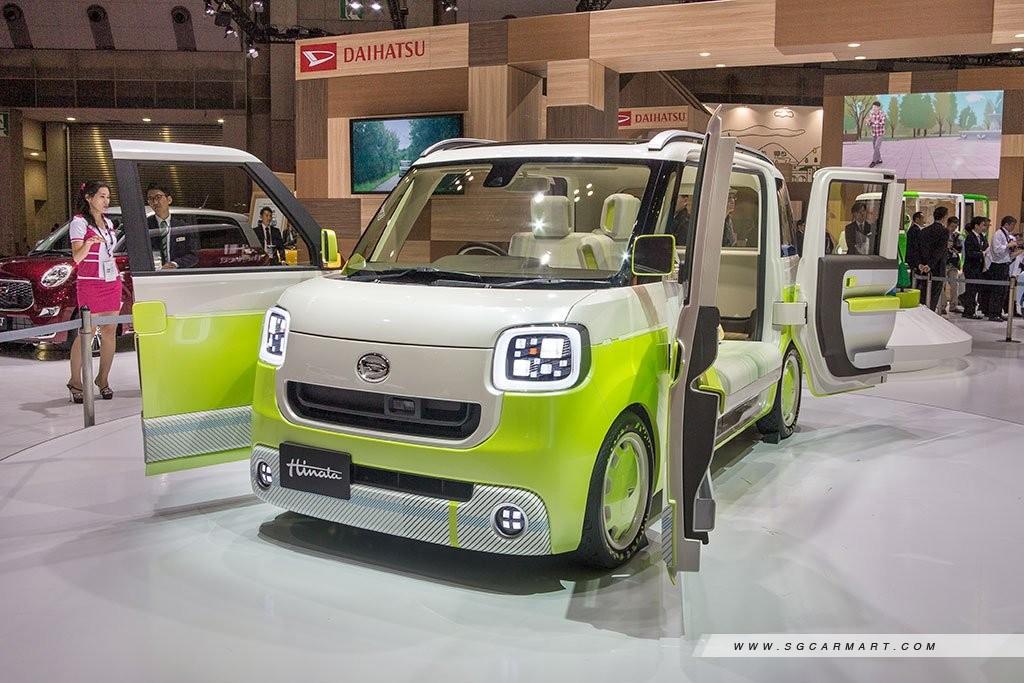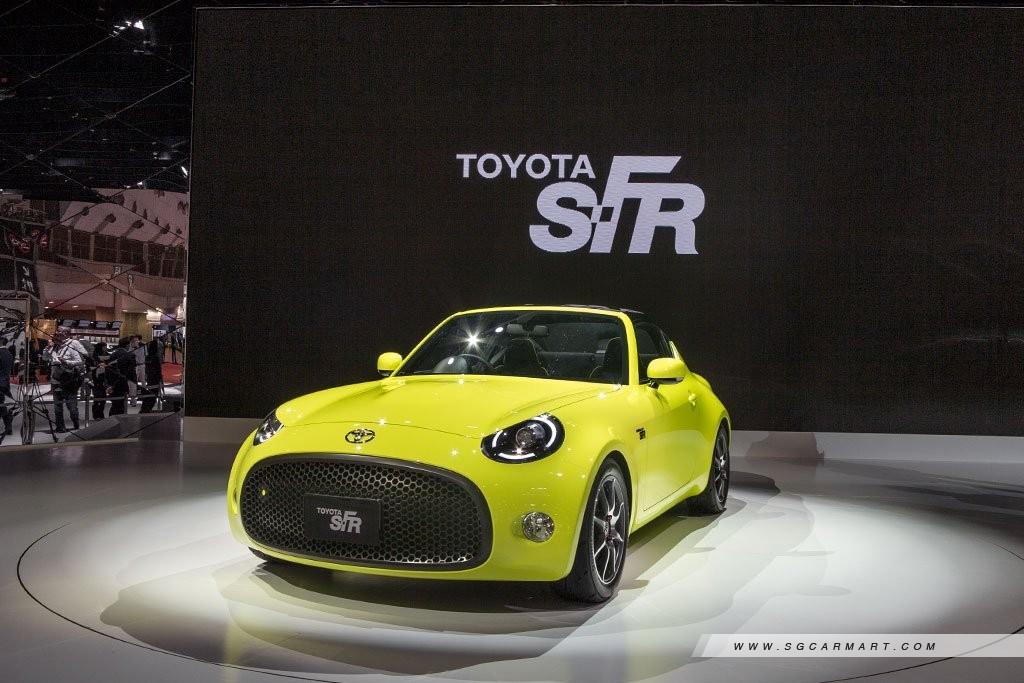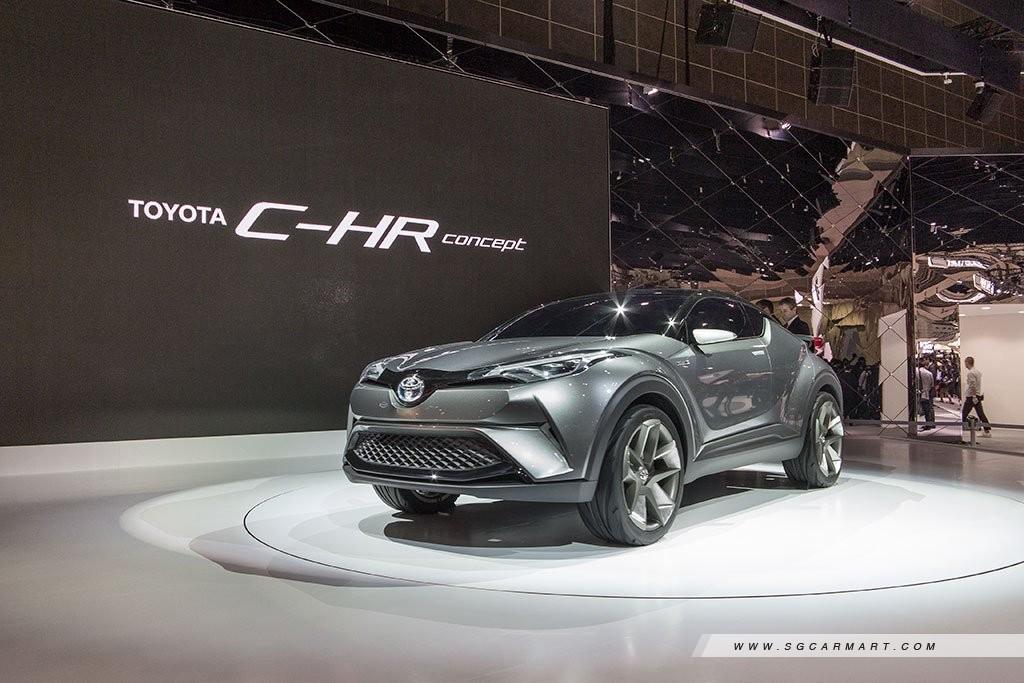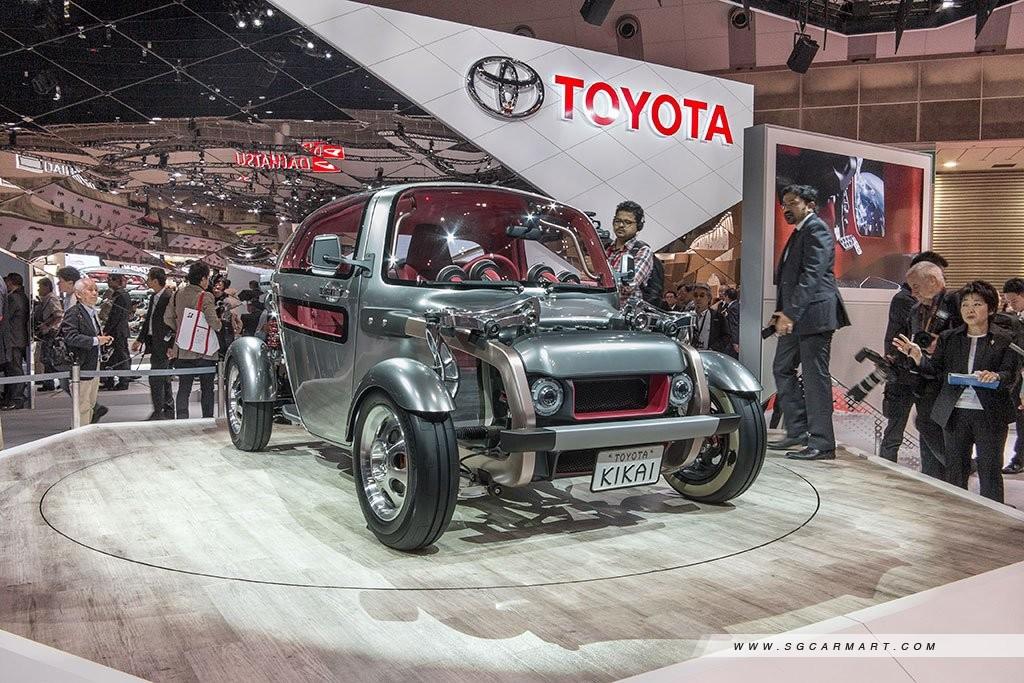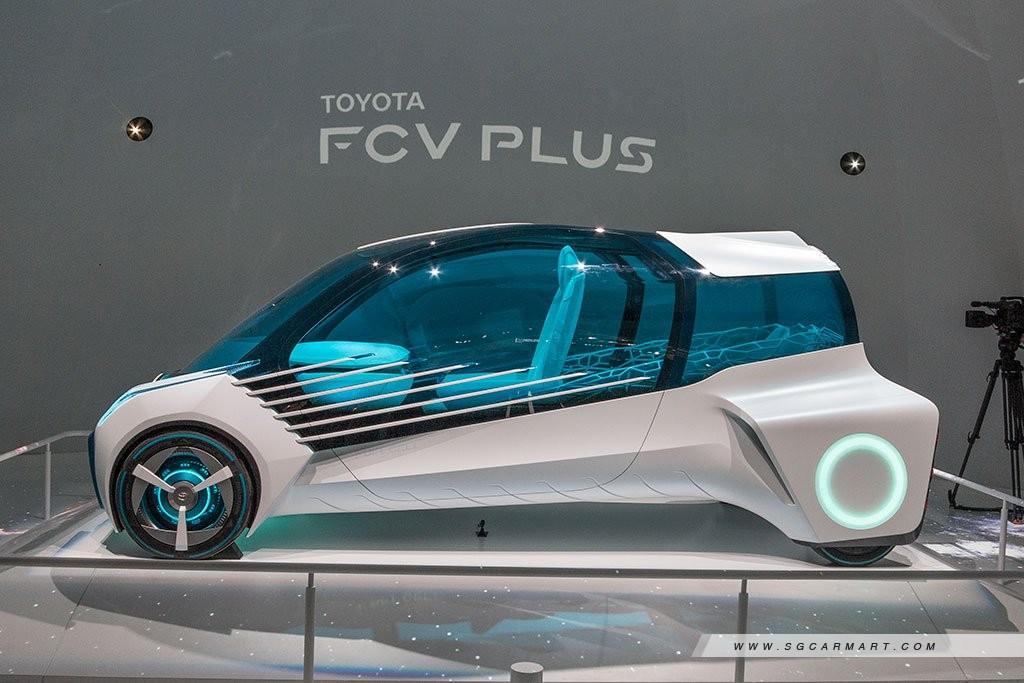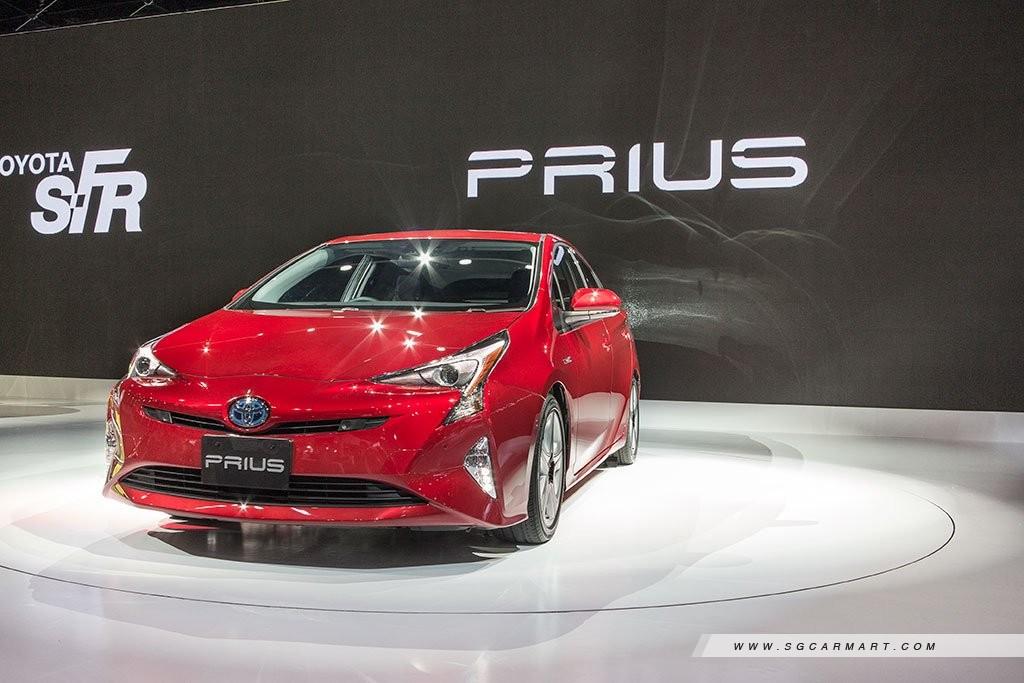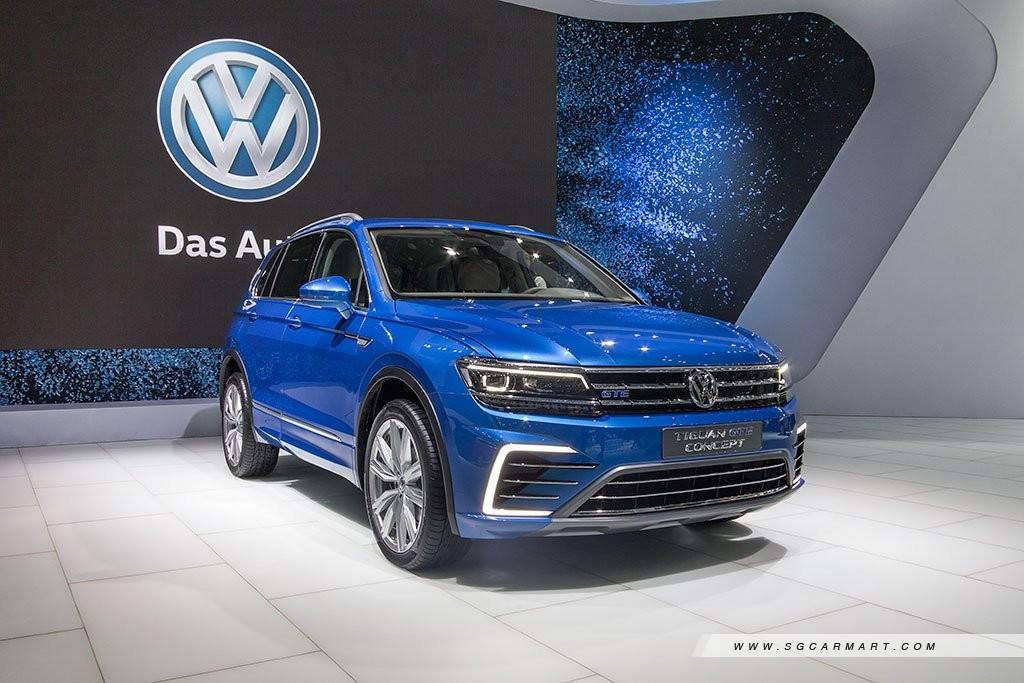The Future is Here
03 Nov 2015|19,818 views
Based on the concept of 'Technology + Fantasy', this year's Tokyo Motor Show (TMS) has been themed 'Your heart will race'. And indeed, building upon more than 60 years of history since its first show in 1954, the 44th TMS will set your heart on fire with a large exhibitor's list of 30 passenger cars that include big names such as Audi, BMW, Lexus, Mercedes-Benz, Toyota and Volkswagen. Not surprising, as it is every year, supercar makers such as Ferrari and Lamborghini are nowhere to be seen.
We take a walk through the different halls in Tokyo Big Sight where the show is held to bring you the highlights of this year's show:
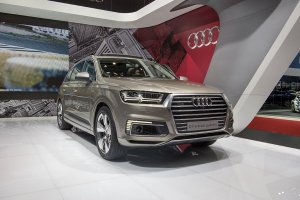 Audi Q7 e-tron
Audi Q7 e-tronBased on the latest and second generation Q7, this eco-friendly Sport Utility Vehicle (SUV) - fitted with a 2.0-litre TFSI engine - is a plug-in hybrid version of the car. More impressively, for the first time as a plug-in hybrid, the car comes with quattro full-time four-wheel drive system. Utilising its lithium-ion battery system, the SUV can travel up to 50km on pure electric mode.
The Q7 e-tron develops a total output of 367bhp and an astounding 700Nm of torque from the combination of its 2.0-litre powerplant and the electric motor. To put things into perspective, the regular Q7 that's fitted with a bigger and juicier 3.0-litre TFSI quattro has a total output of merely 333bhp and 440Nm of torque, which clearly pales in comparison to its plug-in hybrid brethren.
The Q7 e-tron will, thus, cross the 100km/h mark from a standstill in a respectable 5.9 seconds before hitting a top speed of 220km/h.
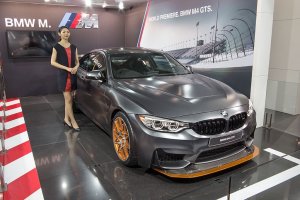 BMW M4 GTS
BMW M4 GTSAside from the plug-in hybrid models like the 330e and the 225xe, BMW premiered the BMW M4 GTS - an exclusive special edition model that serves as a technological showpiece, with its intelligent lightweight design and a significant increase in power over the regular M4 Coupe, thanks to innovative water injection. The result is an outstanding weight-to-power ratio of
 3kg/bhp from a total output of 500bhp.
This power, together with a mountain-moving twisting force of 600Nm, comes from the six-cylinder in-line turbo engine from the BMW M3 and the BMW M4. This allows this radical and dynamically potent model to race to the 100km/h mark from rest in a blazingly quick 3.8 seconds before hitting a limited top speed of 305km/h.
The BMW M4 GTS is limited to a production run of 700 units and celebrates the 30th anniversary of the BMW M3, which has been in production since 1986.
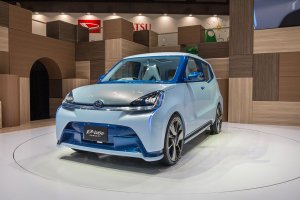 Daihatsu D-base
Daihatsu D-baseDaihatsu exhibited to the world four reference vehicles, amongst others at its booth. One of which is the Daihatsu D-base concept that you see here. Through these exhibits, the Japanese marque aims to show how car manufacturers seek to make all passengers happy and add fun and joy to everyday life through the ongoing evolution of mini vehicles that are a part of their lives.
Measuring some 3,400mm long, 1,480mm wide and 1,490mm tall, this new basic compact car sports an internal combustion engine that incorporates the carmaker's advanced e:S technology, which stands for Energy Saving Technology. According to Daihatsu, this said technology will be at the heart of production of future motor vehicles with high fuel efficiency, low prices, and resource-saving features.
With its 660cc three-cylinder engine, the D-base is likely to be a concept to the next generation Daihatsu Mira.
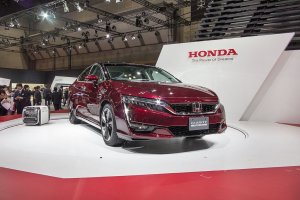 Honda Clarity Fuel Cell
Honda Clarity Fuel CellThis is Honda's innovative fuel cell vehicle.
At 4,895mm x 1,875mm x 1,475mm (L x W x H), the Clarity Fuel Cell is clearly an interesting proposition as it attracts all the attention from the audience as it sits on the stage, next to the NSX. Incorporating Honda's most advanced technologies, this car sports a full cabin packaging that creates room for five adults in comfort.
Moreover, this handsome car offers a generous range of over 700km, a short refueling time of approximately three minutes and an exhilarating driving experience thanks to its high-output motor. It even incorporates an external power supply dubbed the Power Exporter 9000, which allows it to serve as a mobile power outlet when the need arises.
Interestingly, you may select from two driving modes: Normal, for a balance between fuel economy and driving performance, and Sport, which prioritises responsive acceleration. The max output from the motor of the Clarity Fuel Cell is 174bhp.
 Jaguar F-PACE
Jaguar F-PACEMaking its world debut at the Frankfurt Motor Show earlier this year, the Jaguar F-PACE makes yet another appearance at this year's Tokyo Motor Show. Taking centre stage at Jaguar's booth, the SUV, clad in white, is the production version of the C-X17 concept vehicle that was unveiled in Frankfurt in 2013. Utilising Jaguar's Lightweight Aluminium Architecture, the car is made up of 80 percent aluminium.
For a sports SUV, the F-PACE doesn't fail in terms of its spacious cabin too. Apart from generous head and legroom, the SUV offers an astonishing 650 litres of boot space for all on board to place their luggage and groceries.
Also to celebrate the official launch of Jaguar's first performance SUV, an exclusive limited edition model dubbed the First Edition is introduced to the Japanese market. Production of the First Edition model is limited to just 2,000 units worldwide, with Japan getting only 50 units. Based on the S model, the limited edition variant is equipped with a 380bhp 3.0-litre V6 supercharged powerplant that's mated to the eight-speed autobox, delivering a 5.5-second century sprint timing.
While it hasn't been officially confirmed yet, sources state that the F-PACE should be hitting our shores at the end of 2016.
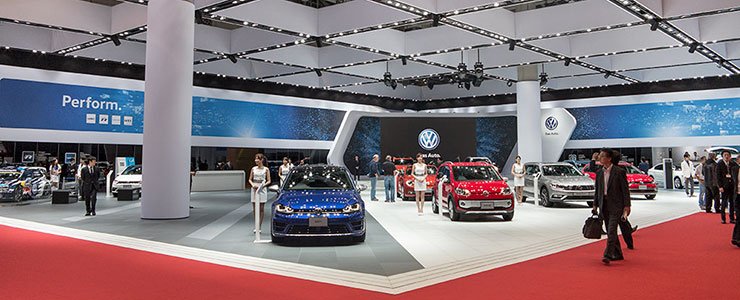 |
From the Honda Clarity Fuel Cell (that you just read on Pg. 1) and the Mercedes-Benz Tokyo Vision to the Nissan IDS Concept and the Toyota FCV Plus, this year's show sees a greater number of driverless technology as well as carmakers focusing on energy and fuel efficient vehicles.
But it doesn't end there. On this page, you'll be able to find out more about the future direction Lexus is taking with its flagship concept as well as how far Mazda has come to realising the next generation of rotary engines since the production of the RX-8 has stopped.
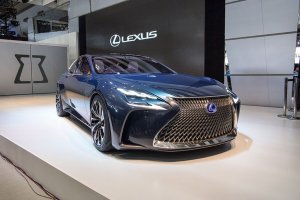 Lexus LF-FC Concept
Lexus LF-FC ConceptSporting fresh new styling theme that embodies Lexus' 'L-finesse' design philosophy, striking new tail lights and sporty 21-inch aluminium wheels with Carbon Fibre Reinforced Plastic (CFRP) rims, the Lexus LF-FC concept grabbed the limelight at the show as it took the stage at Lexus' booth.
Sitting at 5,300mm long, 2,000mm wide and 1,410mm tall, the LF-FC is the preview of the next generation flagship in Lexus' lineup. However, unlike a conventional petrol powertrain, the concept, as the name suggests, is powered by a high-output fuel cell power system that moves the rear wheels, and also sends power to two in-wheel motors in front, making the LF-FC an all-wheel drive concept vehicle.
According to Lexus, this drive system allows precise torque distribution control between the front and rear wheels, giving the full-sized sedan exceptional dynamic handling and superior road stability. The placement of the fuel cell stack and power control unit at the front, and the arrangement of the hydrogen fuel tanks in a T-shape, result in an optimal front and rear weight distribution for a sporty sedan.
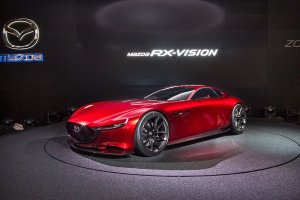 Mazda RX-Vision
Mazda RX-VisionMaking its world premiere in Tokyo, there is no doubting this is the nicest concept on display at this year's show. The Mazda RX-Vision rotary sports car concept introduces the next generation SkyActiv-R rotary engine and Mazda's vision of the ultimate front-engine, rear-wheel drive sports car styling.
Apart from representing a vision of the future that harbours the soul of the Mazda brand, the concept car - measuring 4,389mm x 1,925mm x 1,160mm (L x W x H), also aims to achieve a breakthrough in addressing the three key issues with rotary engines - fuel economy, emissions performance and reliability.
Also shown at the stand is the Mazda Koeru, an all new concept crossover that sports a wheelbase of 2,700mm - similar to the current Mazda CX-5.
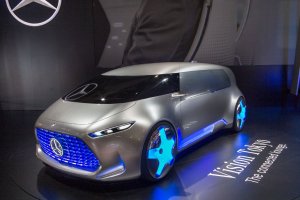 Mercedes-Benz Vision Tokyo
Mercedes-Benz Vision TokyoOn display for the first time to an international audience, the Mercedes-Benz Vision Tokyo is a versatile and intelligently connected five-seater concept car that's also capable of driving autonomously. Aimed at people born since 1995 who have grown up with the new media, this Merc acts more like a digital automobile companion.
Equipped with innovative systems, such as Deep Machine Learning and an intelligent Predictive Engine, means that it becomes more and more familiar with its occupants, their likes and preferences - all of which makes the Vision Tokyo the perfect partner.
With its dimension of 4,803mm x 2,100mm x 1,600mm (L x W x H), the Vision Tokyo is a plug-in hybrid that's powered by a fuel cell powered electric drive system. The electric hybrid system has a total range of 980km, of which some 190km are courtesy of battery-powered driving and around 790km on the electricity produced in the fuel cell.
On display beside it is the F 015 Luxury in Motion that's also based on the similar F-Cell plug-in hybrid.
 Mitsubishi eX Concept
Mitsubishi eX ConceptMitsubishi took the opportunity to debut this compact SUV concept car to showcase the carmaker's next generation Electric Vehicle (EV) system and technologies.
The next generation EV system employs high-capacity and high-performance lithium-ion battery cells and electric motors, making it possible for the 100 percent electric powered Mitsubishi eX Concept to provide a cruising range of 400km. It's fitted with a Twin Motor 4WD drivetrain to produce a maximum output of 95bhp.
In our eyes, the car looks the part of how a future SUV will look like and it will indicate the direction that the carmaker is taking in terms of its designs for future cars to come - elegance and style.
 Porsche Macan GTS
Porsche Macan GTSMaking its world premiere this year is the baby Porsche with much more oomph underneath its bonnet. The Porsche Macan GTS slots nicely between the Macan S and the Macan Turbo, thanks to its 360 strong horses and 500Nm of torque from its 3.0-litre bi-turbo V6 powerplant.
Taking its spot on the stage beside the 911 Carrera 4 - another car that made its world debut - the Macan GTS was shown to the world in blood red sheet metal, which we found to be apt considering its potential prowess.
Despite its weight of close to 1.9 tonnes, the baby Porsche will dash to the 100km/h mark in a respectable 5.2 seconds before reaching an electronically limited top speed of 256km/h. Performance figures aside, the compact SUV will also have no problems hauling bags in its 500-litre boot space.
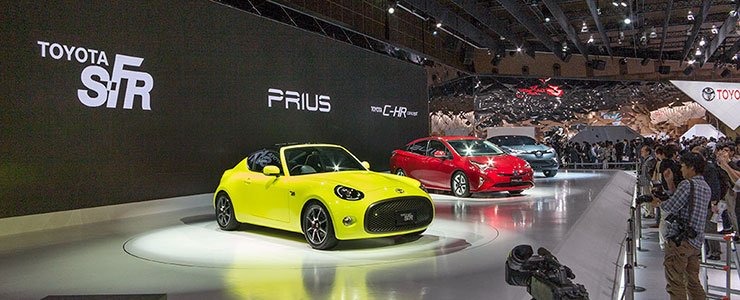 |
With the number of performance cars rising in the industry, attention was turned to reducing pollution. Hence, safety and greener environment were the unavoidable themes of this motor show. But that doesn't mean carmakers compromised on the fun factor of their cars.
Like the Toyota S-FR and the Suzuki Ignis-Trail Concept that you'll read about on this page, the Japanese carmakers are ensuring lower CO2 emissions, better fuel economy but guaranteeing absolute Nintendo fun behind the wheel.
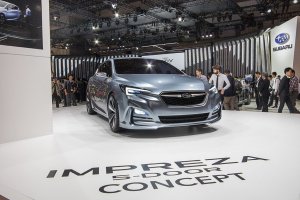 Subaru Impreza 5-Door Concept
Subaru Impreza 5-Door ConceptMaking its world premiere at the show and taking inspiration from the design as the next generation Impreza five-door hatch is the Subaru Impreza 5-Door Concept. Despite being positioned as the entry-level model in Subaru's lineup, the car looks like anything but. On first glance, the concept looks wide and it sits low, exuding a sporty impression.
With its compact dimensions of 4,400mm long, 1,880mm wide and 1,440mm tall, this car has a generous wheelbase of 2,670mm - 25mm longer than the current Impreza's. As such, it should have no problem swallowing five occupants with comfort.
Also making its world premiere at the show is the Subaru VIZIV Future concept - an SUV concept that gives a glimpse of what the Japanese carmaker has in mind for the future of the brand. Boy racers can also rejoice with the release of the limited edition 328bhp S207 WRX STI.
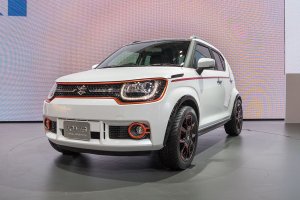 Suzuki Ignis-Trail Concept
Suzuki Ignis-Trail ConceptAs Suzuki will be celebrating its 100th anniversary in 2020, the carmaker's exhibits represent proposals for products and technologies that give a sense of the company's preparations for ongoing success in the next 100 years. Main concepts like the Mighty Deck, the Air Triser and the Ignis-Trail Concept like the one you see here were on stage at Suzuki's booth.
Having an overall length, width and height of 3,700mm, 1,690mm and 1,620mm respectively, the Ignis-Trail Concept sports a 1.3-litre in-line four-cylinder powerplant underneath its bonnet, with a mild hybrid system to assist its boost.
As to when or whether this Ignis-based compact crossover will see the chance to showcase its off-road performance is still unsure at press time.
 Toyota S-FR
Toyota S-FRThe biggest carmaker in Japan unveiled three world premieres - the Toyota S-FR, FCV Plus and KIKAI - at its stand. There were also two Japan premieres, the all new Prius and the C-HR Concept alongside the other cars.
The Toyota S-FR is pitched as an entry-level model without compromising on its fun-to-drive characteristic. Based on its front engine rear-wheel drive layout, this lightweight sports car can fit four occupants in total, although the rear, like the Toyota 86, will be a bit of a squeeze.
While there are many similarities between the 86 and the S-FR, this concept will not be a replacement model to the Toyobaru sports car. Instead, according to Chief Engineer Tetsuya Tada, with a size that slots between the 86 and the MX-5, the S-FR could ideally join the sports car family and be the baby of the 86.
Unfortunately, Tada declined to comment on what sort of engine the car could be having when it goes into production.
 Volkswagen Tiguan GTE
Volkswagen Tiguan GTEAs the first plug-in hybrid from the Wolfsburg carmaker, a 1.4-litre turbocharged engine mated to a six-speed dual-clutch gearbox, can be found under the hood of the Tiguan GTE. Together with the electric motor, the compact SUV is capable of 215bhp from the word go. The net result is a century sprint of 8.1 seconds before maxing out at 200km/h.
This said electric motor is energised by a 13kWh lithium-ion battery, which allows this car to cover 50km on pure electricity before reaching a top speed of 130km/h on its E-mode. Like all GTEs, there is an exclusive GTE mode. Once depressed, the accelerator pedal, gearbox and steering are made noticeably more dynamic, making the car more performance oriented.
It's not confirmed whether this version of the Tiguan will ever make it to the production lineup.
Based on the concept of 'Technology + Fantasy', this year's Tokyo Motor Show (TMS) has been themed 'Your heart will race'. And indeed, building upon more than 60 years of history since its first show in 1954, the 44th TMS will set your heart on fire with a large exhibitor's list of 30 passenger cars that include big names such as Audi, BMW, Lexus, Mercedes-Benz, Toyota and Volkswagen. Not surprising, as it is every year, supercar makers such as Ferrari and Lamborghini are nowhere to be seen.
We take a walk through the different halls in Tokyo Big Sight where the show is held to bring you the highlights of this year's show:

Audi Q7 e-tron
Based on the latest and second generation Q7, this eco-friendly Sport Utility Vehicle (SUV) - fitted with a 2.0-litre TFSI engine - is a plug-in hybrid version of the car. More impressively, for the first time as a plug-in hybrid, the car comes with quattro full-time four-wheel drive system. Utilising its lithium-ion battery system, the SUV can travel up to 50km on pure electric mode.
The Q7 e-tron develops a total output of 367bhp and an astounding 700Nm of torque from the combination of its 2.0-litre powerplant and the electric motor. To put things into perspective, the regular Q7 that's fitted with a bigger and juicier 3.0-litre TFSI quattro has a total output of merely 333bhp and 440Nm of torque, which clearly pales in comparison to its plug-in hybrid brethren.
The Q7 e-tron will, thus, cross the 100km/h mark from a standstill in a respectable 5.9 seconds before hitting a top speed of 220km/h.

BMW M4 GTS
Aside from the plug-in hybrid models like the 330e and the 225xe, BMW premiered the BMW M4 GTS - an exclusive special edition model that serves as a technological showpiece, with its intelligent lightweight design and a significant increase in power over the regular M4 Coupe, thanks to innovative water injection. The result is an outstanding weight-to-power ratio of
 3kg/bhp from a total output of 500bhp.
This power, together with a mountain-moving twisting force of 600Nm, comes from the six-cylinder in-line turbo engine from the BMW M3 and the BMW M4. This allows this radical and dynamically potent model to race to the 100km/h mark from rest in a blazingly quick 3.8 seconds before hitting a limited top speed of 305km/h.
The BMW M4 GTS is limited to a production run of 700 units and celebrates the 30th anniversary of the BMW M3, which has been in production since 1986.

Daihatsu D-base
Daihatsu exhibited to the world four reference vehicles, amongst others at its booth. One of which is the Daihatsu D-base concept that you see here. Through these exhibits, the Japanese marque aims to show how car manufacturers seek to make all passengers happy and add fun and joy to everyday life through the ongoing evolution of mini vehicles that are a part of their lives.
Measuring some 3,400mm long, 1,480mm wide and 1,490mm tall, this new basic compact car sports an internal combustion engine that incorporates the carmaker's advanced e:S technology, which stands for Energy Saving Technology. According to Daihatsu, this said technology will be at the heart of production of future motor vehicles with high fuel efficiency, low prices, and resource-saving features.
With its 660cc three-cylinder engine, the D-base is likely to be a concept to the next generation Daihatsu Mira.

Honda Clarity Fuel Cell
This is Honda's innovative fuel cell vehicle.
At 4,895mm x 1,875mm x 1,475mm (L x W x H), the Clarity Fuel Cell is clearly an interesting proposition as it attracts all the attention from the audience as it sits on the stage, next to the NSX. Incorporating Honda's most advanced technologies, this car sports a full cabin packaging that creates room for five adults in comfort.
Moreover, this handsome car offers a generous range of over 700km, a short refueling time of approximately three minutes and an exhilarating driving experience thanks to its high-output motor. It even incorporates an external power supply dubbed the Power Exporter 9000, which allows it to serve as a mobile power outlet when the need arises.
Interestingly, you may select from two driving modes: Normal, for a balance between fuel economy and driving performance, and Sport, which prioritises responsive acceleration. The max output from the motor of the Clarity Fuel Cell is 174bhp.

Jaguar F-PACE
Making its world debut at the Frankfurt Motor Show earlier this year, the Jaguar F-PACE makes yet another appearance at this year's Tokyo Motor Show. Taking centre stage at Jaguar's booth, the SUV, clad in white, is the production version of the C-X17 concept vehicle that was unveiled in Frankfurt in 2013. Utilising Jaguar's Lightweight Aluminium Architecture, the car is made up of 80 percent aluminium.
For a sports SUV, the F-PACE doesn't fail in terms of its spacious cabin too. Apart from generous head and legroom, the SUV offers an astonishing 650 litres of boot space for all on board to place their luggage and groceries.
Also to celebrate the official launch of Jaguar's first performance SUV, an exclusive limited edition model dubbed the First Edition is introduced to the Japanese market. Production of the First Edition model is limited to just 2,000 units worldwide, with Japan getting only 50 units. Based on the S model, the limited edition variant is equipped with a 380bhp 3.0-litre V6 supercharged powerplant that's mated to the eight-speed autobox, delivering a 5.5-second century sprint timing.
While it hasn't been officially confirmed yet, sources state that the F-PACE should be hitting our shores at the end of 2016.From the Honda Clarity Fuel Cell (that you just read on Pg. 1) and the Mercedes-Benz Tokyo Vision to the Nissan IDS Concept and the Toyota FCV Plus, this year's show sees a greater number of driverless technology as well as carmakers focusing on energy and fuel efficient vehicles.
But it doesn't end there. On this page, you'll be able to find out more about the future direction Lexus is taking with its flagship concept as well as how far Mazda has come to realising the next generation of rotary engines since the production of the RX-8 has stopped.
 Lexus LF-FC Concept
Lexus LF-FC ConceptSporting fresh new styling theme that embodies Lexus' 'L-finesse' design philosophy, striking new tail lights and sporty 21-inch aluminium wheels with Carbon Fibre Reinforced Plastic (CFRP) rims, the Lexus LF-FC concept grabbed the limelight at the show as it took the stage at Lexus' booth.
Sitting at 5,300mm long, 2,000mm wide and 1,410mm tall, the LF-FC is the preview of the next generation flagship in Lexus' lineup. However, unlike a conventional petrol powertrain, the concept, as the name suggests, is powered by a high-output fuel cell power system that moves the rear wheels, and also sends power to two in-wheel motors in front, making the LF-FC an all-wheel drive concept vehicle.
According to Lexus, this drive system allows precise torque distribution control between the front and rear wheels, giving the full-sized sedan exceptional dynamic handling and superior road stability. The placement of the fuel cell stack and power control unit at the front, and the arrangement of the hydrogen fuel tanks in a T-shape, result in an optimal front and rear weight distribution for a sporty sedan.

Mazda RX-Vision
Making its world premiere in Tokyo, there is no doubting this is the nicest concept on display at this year's show. The Mazda RX-Vision rotary sports car concept introduces the next generation SkyActiv-R rotary engine and Mazda's vision of the ultimate front-engine, rear-wheel drive sports car styling.
Apart from representing a vision of the future that harbours the soul of the Mazda brand, the concept car - measuring 4,389mm x 1,925mm x 1,160mm (L x W x H), also aims to achieve a breakthrough in addressing the three key issues with rotary engines - fuel economy, emissions performance and reliability.
Also shown at the stand is the Mazda Koeru, an all new concept crossover that sports a wheelbase of 2,700mm - similar to the current Mazda CX-5.

Mercedes-Benz Vision Tokyo
On display for the first time to an international audience, the Mercedes-Benz Vision Tokyo is a versatile and intelligently connected five-seater concept car that's also capable of driving autonomously. Aimed at people born since 1995 who have grown up with the new media, this Merc acts more like a digital automobile companion.
Equipped with innovative systems, such as Deep Machine Learning and an intelligent Predictive Engine, means that it becomes more and more familiar with its occupants, their likes and preferences - all of which makes the Vision Tokyo the perfect partner.
With its dimension of 4,803mm x 2,100mm x 1,600mm (L x W x H), the Vision Tokyo is a plug-in hybrid that's powered by a fuel cell powered electric drive system. The electric hybrid system has a total range of 980km, of which some 190km are courtesy of battery-powered driving and around 790km on the electricity produced in the fuel cell.
On display beside it is the F 015 Luxury in Motion that's also based on the similar F-Cell plug-in hybrid.

Mitsubishi eX Concept
Mitsubishi took the opportunity to debut this compact SUV concept car to showcase the carmaker's next generation Electric Vehicle (EV) system and technologies.
The next generation EV system employs high-capacity and high-performance lithium-ion battery cells and electric motors, making it possible for the 100 percent electric powered Mitsubishi eX Concept to provide a cruising range of 400km. It's fitted with a Twin Motor 4WD drivetrain to produce a maximum output of 95bhp.
In our eyes, the car looks the part of how a future SUV will look like and it will indicate the direction that the carmaker is taking in terms of its designs for future cars to come - elegance and style.

Porsche Macan GTS
Making its world premiere this year is the baby Porsche with much more oomph underneath its bonnet. The Porsche Macan GTS slots nicely between the Macan S and the Macan Turbo, thanks to its 360 strong horses and 500Nm of torque from its 3.0-litre bi-turbo V6 powerplant.
Taking its spot on the stage beside the 911 Carrera 4 - another car that made its world debut - the Macan GTS was shown to the world in blood red sheet metal, which we found to be apt considering its potential prowess.
Despite its weight of close to 1.9 tonnes, the baby Porsche will dash to the 100km/h mark in a respectable 5.2 seconds before reaching an electronically limited top speed of 256km/h. Performance figures aside, the compact SUV will also have no problems hauling bags in its 500-litre boot space.With the number of performance cars rising in the industry, attention was turned to reducing pollution. Hence, safety and greener environment were the unavoidable themes of this motor show. But that doesn't mean carmakers compromised on the fun factor of their cars.
Like the Toyota S-FR and the Suzuki Ignis-Trail Concept that you'll read about on this page, the Japanese carmakers are ensuring lower CO2 emissions, better fuel economy but guaranteeing absolute Nintendo fun behind the wheel.
 Subaru Impreza 5-Door Concept
Subaru Impreza 5-Door ConceptMaking its world premiere at the show and taking inspiration from the design as the next generation Impreza five-door hatch is the Subaru Impreza 5-Door Concept. Despite being positioned as the entry-level model in Subaru's lineup, the car looks like anything but. On first glance, the concept looks wide and it sits low, exuding a sporty impression.
With its compact dimensions of 4,400mm long, 1,880mm wide and 1,440mm tall, this car has a generous wheelbase of 2,670mm - 25mm longer than the current Impreza's. As such, it should have no problem swallowing five occupants with comfort.
Also making its world premiere at the show is the Subaru VIZIV Future concept - an SUV concept that gives a glimpse of what the Japanese carmaker has in mind for the future of the brand. Boy racers can also rejoice with the release of the limited edition 328bhp S207 WRX STI.

Suzuki Ignis-Trail Concept
As Suzuki will be celebrating its 100th anniversary in 2020, the carmaker's exhibits represent proposals for products and technologies that give a sense of the company's preparations for ongoing success in the next 100 years. Main concepts like the Mighty Deck, the Air Triser and the Ignis-Trail Concept like the one you see here were on stage at Suzuki's booth.
Having an overall length, width and height of 3,700mm, 1,690mm and 1,620mm respectively, the Ignis-Trail Concept sports a 1.3-litre in-line four-cylinder powerplant underneath its bonnet, with a mild hybrid system to assist its boost.
As to when or whether this Ignis-based compact crossover will see the chance to showcase its off-road performance is still unsure at press time.

Toyota S-FR
The biggest carmaker in Japan unveiled three world premieres - the Toyota S-FR, FCV Plus and KIKAI - at its stand. There were also two Japan premieres, the all new Prius and the C-HR Concept alongside the other cars.
The Toyota S-FR is pitched as an entry-level model without compromising on its fun-to-drive characteristic. Based on its front engine rear-wheel drive layout, this lightweight sports car can fit four occupants in total, although the rear, like the Toyota 86, will be a bit of a squeeze.
While there are many similarities between the 86 and the S-FR, this concept will not be a replacement model to the Toyobaru sports car. Instead, according to Chief Engineer Tetsuya Tada, with a size that slots between the 86 and the MX-5, the S-FR could ideally join the sports car family and be the baby of the 86.
Unfortunately, Tada declined to comment on what sort of engine the car could be having when it goes into production.

Volkswagen Tiguan GTE
As the first plug-in hybrid from the Wolfsburg carmaker, a 1.4-litre turbocharged engine mated to a six-speed dual-clutch gearbox, can be found under the hood of the Tiguan GTE. Together with the electric motor, the compact SUV is capable of 215bhp from the word go. The net result is a century sprint of 8.1 seconds before maxing out at 200km/h.
This said electric motor is energised by a 13kWh lithium-ion battery, which allows this car to cover 50km on pure electricity before reaching a top speed of 130km/h on its E-mode. Like all GTEs, there is an exclusive GTE mode. Once depressed, the accelerator pedal, gearbox and steering are made noticeably more dynamic, making the car more performance oriented.
It's not confirmed whether this version of the Tiguan will ever make it to the production lineup.
Thank You For Your Subscription.
